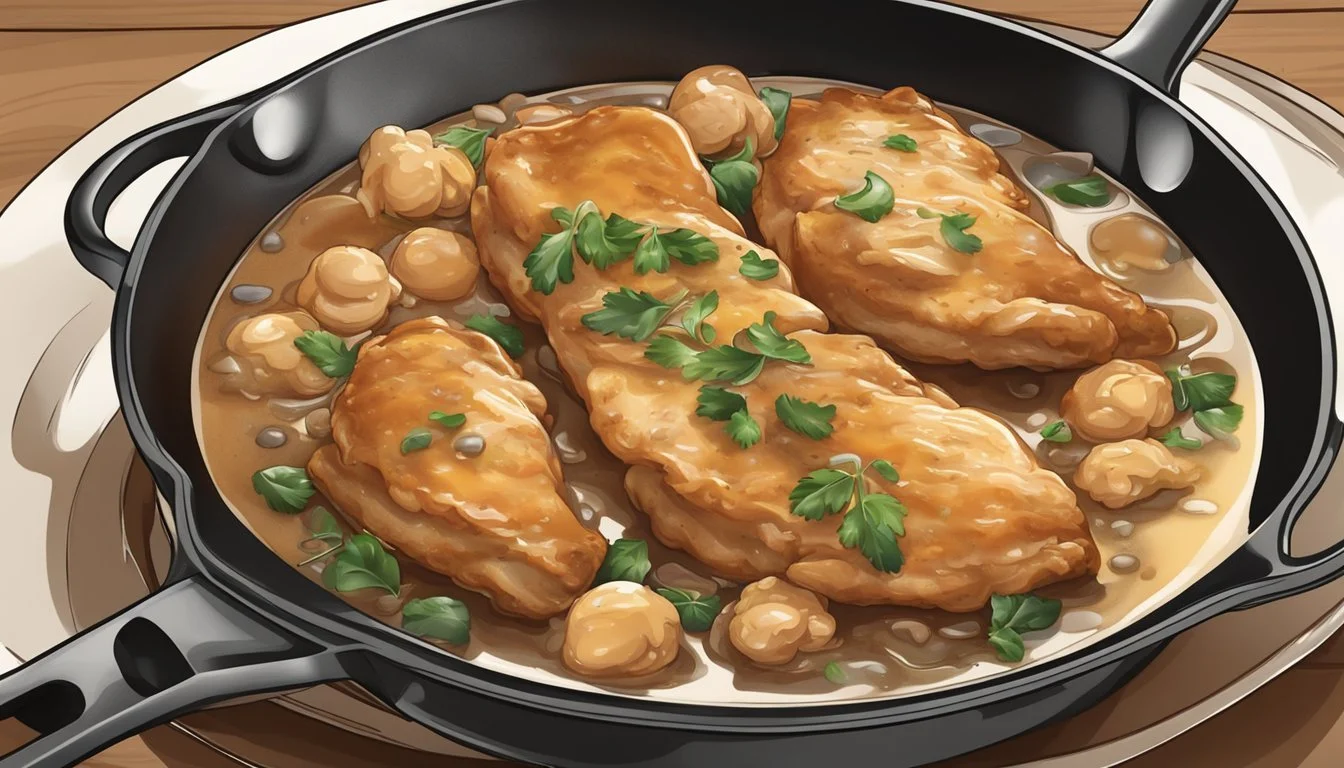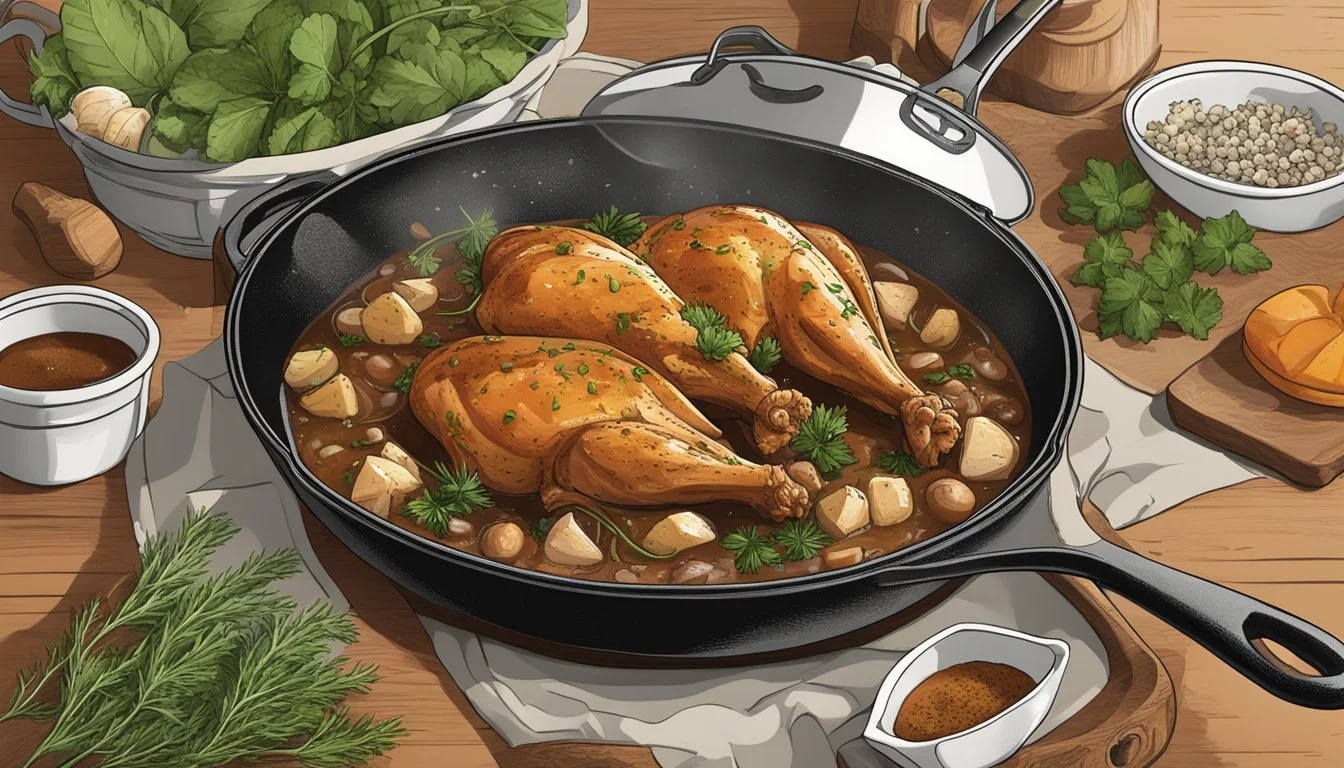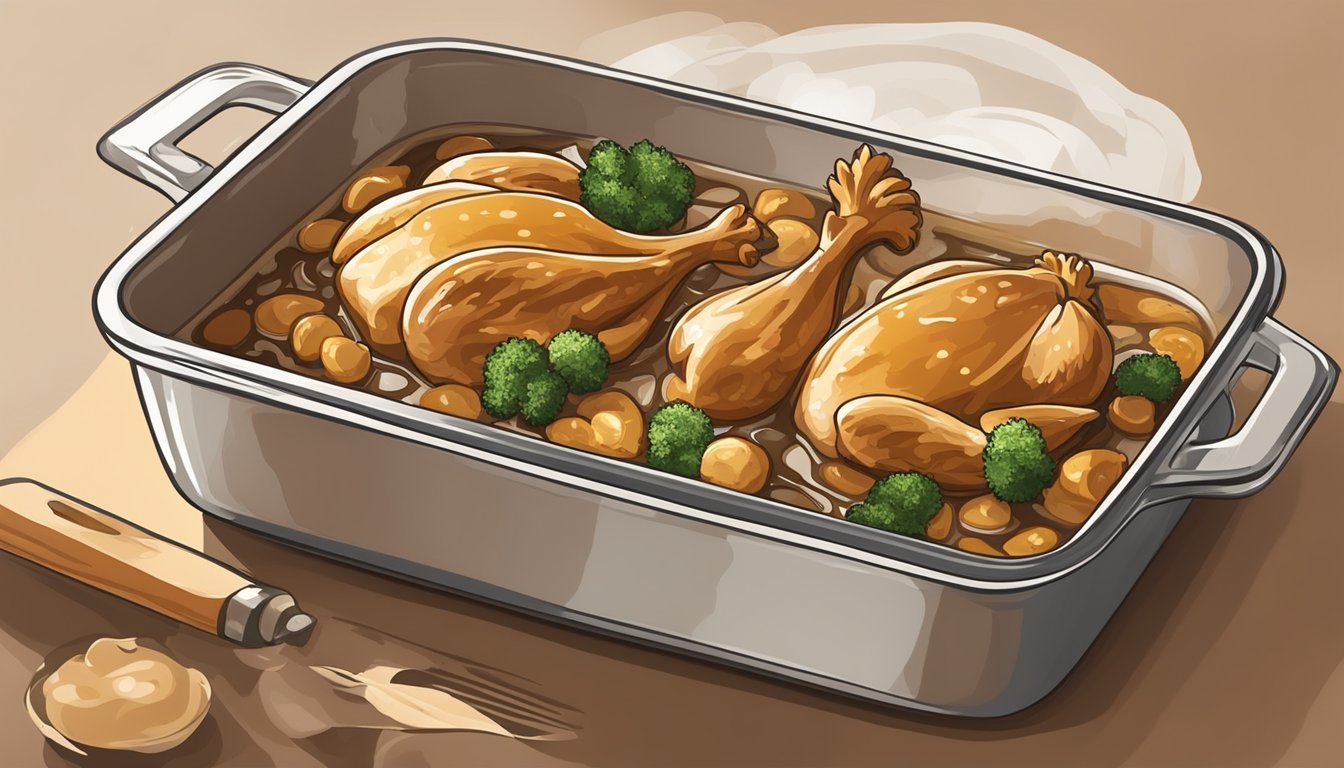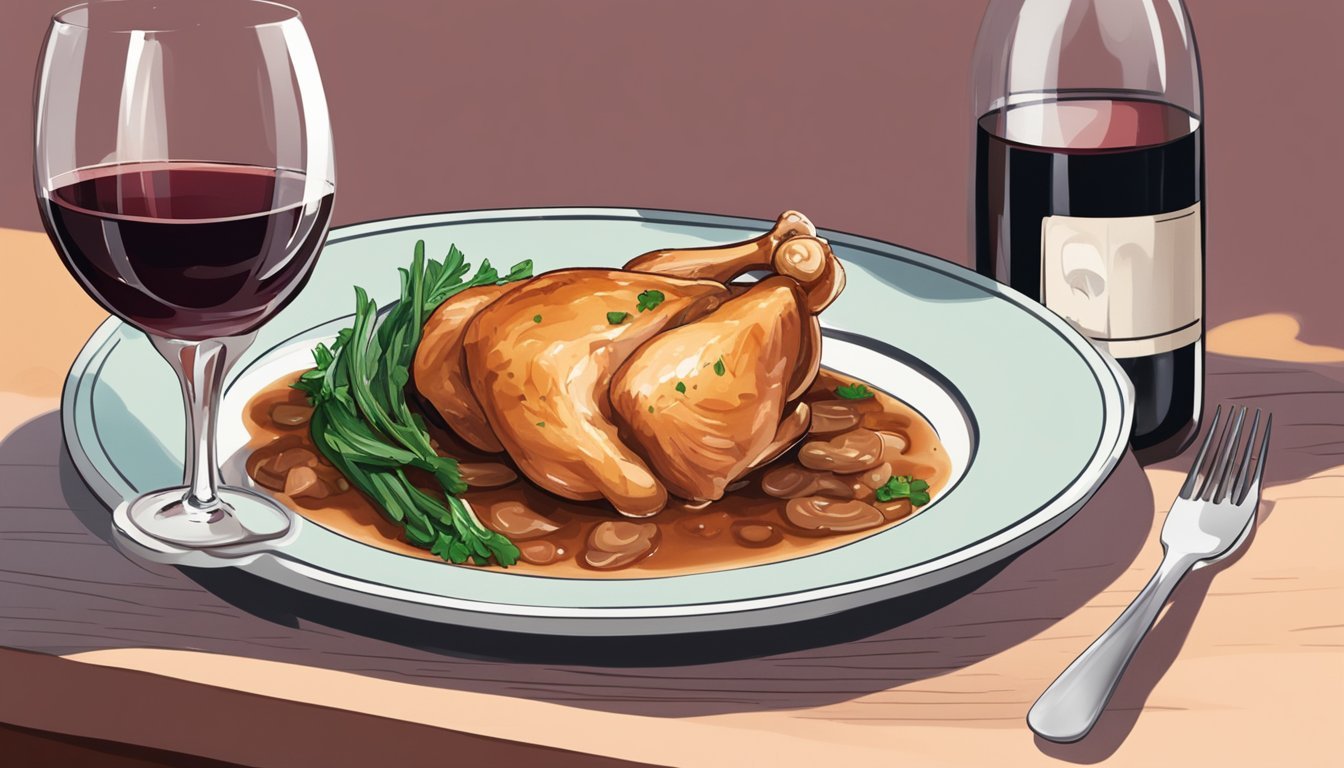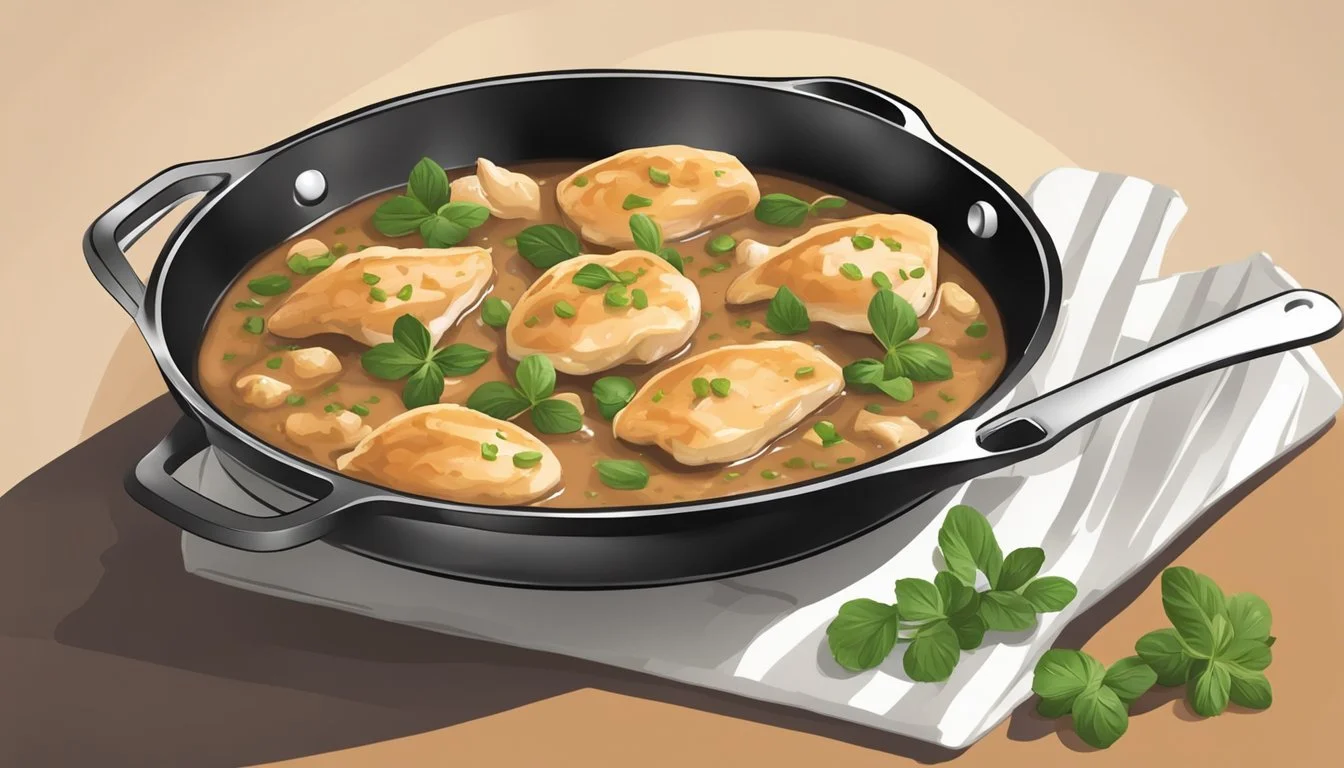Best Way to Reheat Chicken Marsala
Ensuring a Rich Sauce and Moist Chicken
Reheating Chicken Marsala (What wine goes well with chicken marsala?) requires a technique that preserves the moisture of the chicken and maintains the richness of the sauce. To ensure that the dish remains just as flavorful as when it was first prepared, it is essential to use methods that gently warm the chicken without drying it out, while simultaneously keeping the sauce from separating or becoming too thin.
The challenge lies in the dual components of the dish: the chicken and the Marsala-wine-infused mushroom sauce. Retaining the tender juiciness of the chicken breasts and the robust, creamy texture of the sauce is key to an enjoyable leftover experience. Attention to detail and the proper reheating method can make all the difference, turning a simple meal into a delightful encore presentation of a culinary favorite.
Overview of Chicken Marsala Reheating Techniques
Proper reheating techniques can ensure that Chicken Marsala retains its rich sauce and moist texture. Below are succinct methods for reviving leftover Chicken Marsala through different heating methods.
Oven Method
The oven method is a gentle way to reheat Chicken Marsala. One should preheat the oven to 350°F (175°C), place the dish in an oven-safe container, and cover it with foil to keep moisture in. It typically takes 15-20 minutes until the dish is heated through. This method helps maintain the integrity of the chicken and prevents the sauce from drying out.
Stovetop Method
Using the stovetop method, Chicken Marsala is reheated in a skillet or non-stick frying pan. One should add a bit of water, broth, or wine to prevent the sauce from sticking, cover with a lid, and reheat on medium-low heat. Stirring occasionally, this process should take about 5-7 minutes for even heating.
Microwave Method
The microwave method is the quickest option for reheating Chicken Marsala. The dish should be placed in a microwave-safe container, covered with a microwave-safe lid or plastic wrap to preserve moisture, and heated on high for 2-3 minutes, stirring once halfway through to ensure even warming. This method can reduce the textural quality of the chicken, so it should be used with caution.
Preparing Chicken Marsala for Reheating
Proper storage and preparation are crucial for retaining the rich flavor and moisture of Chicken Marsala when reheating.
Storing Leftovers
To maintain the quality of Chicken Marsala, it should be stored in the refrigerator within two hours of cooking. Leftovers must be placed in an airtight container to prevent the sauce from drying out and the chicken from absorbing unwanted flavors from the fridge. For additional protection, one can cover the top of the dish with plastic wrap before sealing it with a lid. This method ensures the sauce remains rich and the chicken stays moist.
Store in Refrigerator: Preserve Chicken Marsala by cooling it quickly and storing it in the fridge.
Airtight Container Use: Opt for glass or plastic containers with tight-fitting lids.
Extra Protection: Seal the surface with plastic wrap, then cover with the lid.
Pre-Reheating Steps
Before reheating Chicken Marsala, some steps should be taken to ensure the best possible outcome. First, they must remove the dish from the refrigerator and let it stand at room temperature for about 15 minutes to take the chill off. This helps in reheating the chicken and sauce more evenly. If the sauce has thickened too much in the fridge, they can stir in a small amount of water, broth, or Marsala wine to thin it slightly without diluting the flavor.
Temperature Equalizing: Allow the dish to sit outside the fridge for 15 minutes.
Sauce Consistency Adjustment: Add liquid as needed to restore the original consistency of the Marsala sauce.
Reheating in the Oven
Reheating Chicken Marsala in a preheated oven is a reliable method that preserves the dish’s rich sauce and keeps the chicken moist.
Setting Up Your Oven
To begin, one should preheat the oven to 350°F (175°C). This temperature ensures that the Chicken Marsala is warmed thoroughly without compromising its texture and flavor. It's important to allow the oven to reach the desired temperature before placing the dish inside to achieve an even reheat.
Preheat: 350°F (175°C)
Reheating Process
Once the oven is preheated, one should take the following steps to reheat the Chicken Marsala:
Preparation: Place the Chicken Marsala in an oven-safe baking dish to contain the sauce and prevent drying out.
Cover: Seal the dish with aluminum foil to trap moisture and ensure that the chicken stays tender.
Reheat: Heat the Chicken Marsala in the preheated oven.
Duration: 15-20 minutes, or until the Chicken Marsala reaches an internal temperature of 165°F (74°C), as checked by a food thermometer.
Checking: It's crucial to use a food thermometer to confirm the Chicken Marsala has reached the safe internal temperature for consumption.
Reheating in the oven using these steps ensures that the Chicken Marsala retains its flavor and texture, resulting in a dish nearly as good as when it was first prepared.
Reheating on the Stovetop
When reheating Chicken Marsala on the stovetop, the goal is to maintain its delightful flavor while ensuring the chicken stays moist. Achieving this involves using the right skillet and technique to sauté and simmer the dish gently.
Skillet Selection
Select a non-stick skillet or frying pan that will accommodate the Chicken Marsala without overcrowding it. This helps in even heating and prevents sticking. For added flavor and moisture, it's advisable to use a splash of chicken broth; this liquid will help to keep the Marsala sauce rich and the chicken tender. If desired, a small amount of oil or butter can be added to the skillet to enhance the richness of the sauce and infuse the dish with a hint of additional flavor.
Sauté and Simmer
Begin by heating the skillet over medium-low heat. Add the leftover Chicken Marsala, spreading it out evenly. To sauté, gently stir the chicken in the skillet, incorporating the sauce and herbs, which are essential to the profile of this Italian-American dish. After the initial sauté, reduce the heat to low, allowing the dish to simmer. Cover the skillet with a lid to retain moisture. This method will reheat the dish thoroughly while keeping the chicken succulent and the sauce flavorful. The simmering process should take approximately 5-7 minutes, but one should always ensure that the chicken is heated through before serving.
Reheating in the Microwave
When reheating Chicken Marsala in the microwave, it is crucial to retain the sauce’s richness and keep the chicken moist, preventing the dish from becoming dry or overcooked.
Microwave-Safe Practices
To reheat Chicken Marsala, one must transfer it into a microwave-safe container. It is imperative to use a microwave-safe lid or plastic wrap to cover the dish, which helps to retain moisture and ensure even heating. If using plastic wrap, it should be loosely tented over the container, making sure it doesn’t touch the food, to avoid the risk of melting. Venting the cover or wrap is important to allow steam to escape.
Timings and Power Settings
For optimal results, the Chicken Marsala should be reheated on high power. A microwave method standard is to set the timer for 2-3 minutes. However, to avoid overcooking, checking the dish every minute is recommended—stirring if necessary to heat evenly. Some microwaves have different power levels, so one might opt for medium power and extend the time slightly, checking the chicken’s temperature frequently. It's important that the chicken achieves an internal temperature of 165°F (74°C), indicative of having been heated thoroughly.
Tips to Maintain Quality
When reheating Chicken Marsala, the goal is to preserve the moisture of the chicken and the richness of the sauce. Achieving the ideal texture and enhancing the flavors are pivotal to the reheating process.
Avoiding Dryness
To prevent the chicken from drying out, one should reheat Chicken Marsala gently. A low to medium heat is preferred, whether using a skillet or an oven. In the oven, reheating at 350°F (175°C) for 15-20 minutes is often recommended. Cover the dish with foil to keep in the moisture. When using a skillet, one might add a small amount of liquid—such as broth or wine—to maintain the sauce’s consistency. Cover the skillet with a lid to distribute heat evenly and retain moisture.
Enhancing Flavor
The key to enhancing the flavor lies in not just how one reheats the Chicken Marsala, but also in adding ingredients that complement the dish's original taste. Incorporating fresh herbs or a drizzle of olive oil can revitalize the flavors. A pinch of salt and freshly ground black pepper can also help, but one should be cautious to not overpower the existing flavors. For a subtle acidic note, a squeeze of lemon juice or a splash of vinegar can be added just before serving.
Serving and Pairing Suggestions
Once you've expertly reheated your Chicken Marsala, serving it with the right sides and pairings can elevate it from a mere leftover meal to a culinary delight. It's important to choose accompaniments that complement the rich sauce and tender chicken, as well as beverages that enhance the overall flavor.
Sides and Accompaniments
Pasta (What wine goes well with pasta?): A classic Italian-American side, pasta, particularly long noodles such as fettuccine or linguine, pairs excellently with Chicken Marsala. The pasta's subtle flavor balances the richness of the Marsala sauce.
Rice: A bed of fluffy rice serves not only as a hearty side but also soaks up the Marsala sauce, offering a flavorful base for the dish.
Vegetables: Steamed or roasted vegetables like asparagus, green beans, or a medley including mushrooms complement the earthy tones of the Marsala sauce.
Italian Bread: For those who appreciate a crusty piece of bread, Italian bread is perfect for mopping up any remaining Marsala sauce.
Wine and Drink Pairings
Chicken Marsala calls for a beverage that can hold its own against the savory and complex flavors of the dish.
Marsala Wine: Given that the dish is flavored with Marsala wine, serving the same variety alongside the meal creates a harmonious dining experience.
Italian Reds: A medium-bodied Italian red wine such as Chianti or Barbera d'Asti can cut through the richness while complementing the mushroom and chicken flavors.
Water: For non-alcoholic options, one can never go wrong with water to cleanse the palate between bites.
Advanced Topics and FAQs
This section dives into the intricacies of handling Chicken Marsala beyond the basic reheating techniques, covering optimal freezing practices and innovative uses for leftovers.
Freezing and Thawing Chicken Marsala
When freezing Chicken Marsala, they must ensure the dish has cooled to room temperature to prevent ice crystal formation. They should place it in an airtight container or a heavy-duty freezer bag. Properly stored, Chicken Marsala can be frozen for up to 4 months. To thaw frozen Chicken Marsala, it is recommended to transfer it into the refrigerator and allow it to defrost overnight. Microwaving directly from the freezer is not advisable as it may affect the texture of the chicken and integrity of the sauce.
Creative Uses for Leftovers
Leftover Chicken Marsala can be repurposed into various recipes to minimize waste and enliven the palette. One can easily incorporate the chicken into a hearty Marsala pasta by simply tossing it with the reheated sauce and their choice of cooked pasta. Alternatively, they can create a Chicken Marsala panini by slicing the chicken and layering it with cheese and greens between slices of artisan bread, grilling until the bread is toasted and the fillings are warm. These variations not only reduce food waste but also add versatility to the dish.
For any additional assistance or pressing questions (FAQs), readers are encouraged to reach out to culinary forums or cooking experts who often share their knowledge and experience in reheating leftovers and the art of freezer storage.
Culinary Tips and Tricks
The essence of reheating Chicken Marsala with finesse lies in preserving its rich sauce and moist chicken. These techniques and professional insights help ensure each bite retains the savory flavors and tender textures that make this dish a classic.
Improving Texture and Taste
Texture plays a pivotal role in the enjoyment of Chicken Marsala. A careful approach to reheating can prevent the chicken from becoming tough and the sauce from separating. Here are specific strategies:
Oven Method: Preheat the oven to 350°F. Reheat the Chicken Marsala in an oven-safe dish, covered with foil, to encourage even heating and prevent drying out. Heat for 15-20 minutes, checking that the internal temperature reaches 165°F.
Stovetop Method: For added moisture, one can use a non-stick skillet, adding a small amount of water, broth, or marsala wine. Heat over medium-low with a lid, stirring occasionally to distribute heat evenly and maintain a rich sauce consistency.
Regularly tasting and adjusting with salt and herbs like basil, or even additional garlic or onions, can enhance the flavor profile of the dish during reheating. Adding sliced mushrooms or spinach can also complement and revitalise the original flavors.
Professional Advice
Recipe developers and professional chefs suggest being cautious when using a microwave, as it tends to heat unevenly and may alter the dish's texture. If the microwave is the only option, it should be set to medium power, with the Chicken Marsala placed in a microwave-safe container, and covered loosely with a lid or plastic wrap to retain moisture. Stirring halfway through the heating process can help prevent cold spots.
A thorough marinate prior to the initial cooking imbues the chicken with deep flavors, which means even after refrigeration, the reheated dish will maintain a robust taste. When storing cooked Chicken Marsala, ensure it's in a sealed container to keep it from absorbing other flavors from the fridge.
To elevate a home-cooked meal, chefs recommend incorporating fresh herbs or a sprinkle of freshly grated Parmesan cheese after reheating to boost the flavor profile and add a gourmet touch.

